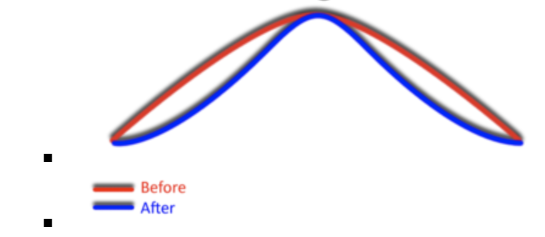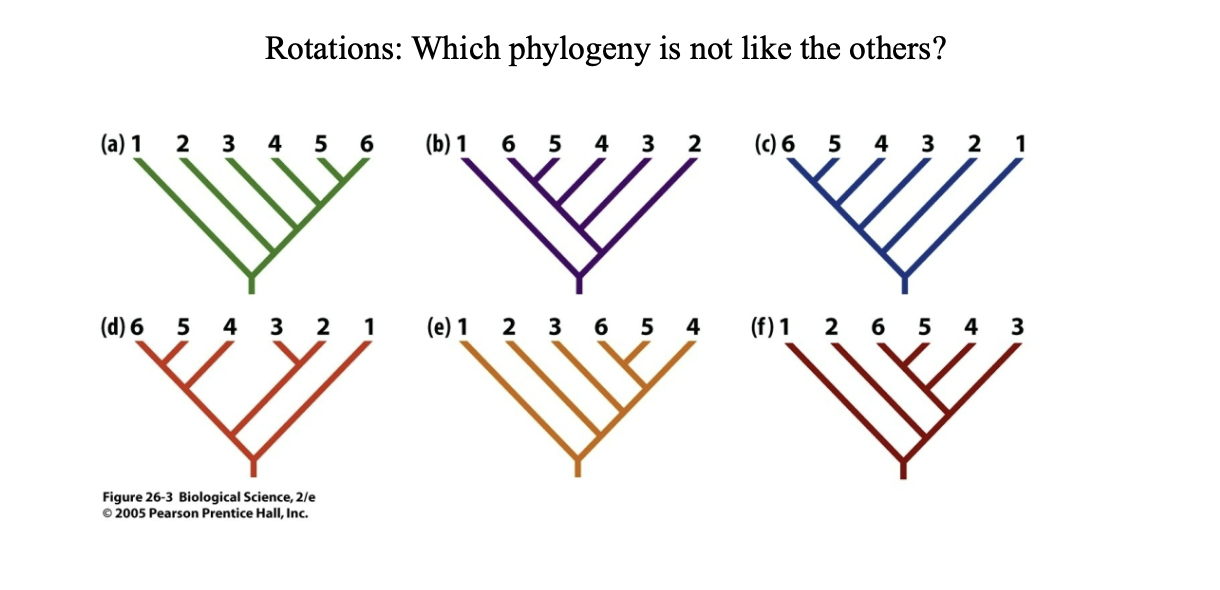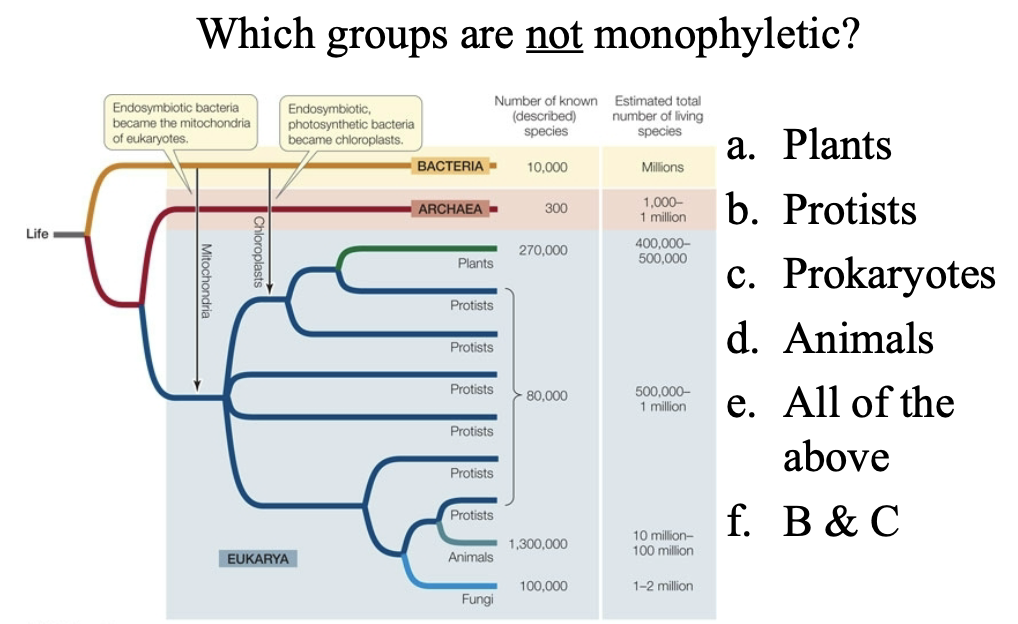bio 204 Exam 2 Content
1/206
There's no tags or description
Looks like no tags are added yet.
Name | Mastery | Learn | Test | Matching | Spaced |
|---|
No study sessions yet.
207 Terms
Mutation, Natural selection, genetic drift, gene flow and nonrandom mating are all?
cause of microevolution
Which of the following most consistently increases fitness in a population?
natural selection
what’s the ultimate source of genetic variation?
change in dna
4 steps/postulates of natural selection?
Variation
Heritability
Differential reproduction
fitness of traits
Phylogenetic species?
groups of organisms that share a pattern of ancestry and descent and which form a single branch on the tree of life
from sequencing genes or DNA differences suggesting a different species
E.
What’s Allopatric Speciation?
a type of speciation where a new species evolves from a population that becomes geographically isolated from the parent population
Natural selection is the only one that increases__________ of a population overall.
fitness

What does this graph depict? and why?
stabilizing selection
no change in the average value of a trait but reduce in variation
What’s stabilizing selection?
when there’s reduce variation in a population for a trait but there isn’t a change in the average value of that trait.

What does this graph depict? and why?
disruptive selection
there’s an extreme at both ends of the trait
What’s disruptive selection?
when the average trait decreases leaving an extreme of the sepectrum of traits

What does this graph depict? and why?
Directional Selection
when a trait shifts to one direction of the spectrum
reduces genetic diversity
What’s directional selection
when a trait shifts to one direction of the spectrum
reduces genetic diversity
What sexual selection?
operating on differences in the ability of an indivudal to attract mates
What can be directional, disruptive or stabilzing?
sexual selection it’s very dependent of species interactions
What’s sexual dysmorphism?
when male & females have different traits
What are the 2 predictions for sexual disphormism?
one parent has to put more of an inventement leading to be more choosy about mates
stronger compeition for mates in opp. sex.
What’s genetic drift?
changes in alleles frequencies due to random chance in events for small populations.
Overtime ____ tends to reduce genetic diversity?
genetic drift
What’s the bottleneck effect?
type of genetic drift where the larger population is drastically reduce by chance event, resulting in a smaller gene pool.
What’s the founder effect?
type of genetic drift where a new population starts with few indidvuals
What are 3 main key points to know about genetic drift?
more pronounced in smaller populations
may or may not increase fitnesses
can lead to a loss of alleles
In general Geneflow is?
exchange across population due to migration of alleles
What’s Non-random mating?
inbreeding
Inbreeding tends to?
reduce heterozygotes in a population
Inbreeding doesnt directly change alleles portions but can contribute……?
to evolution when theres selection against homozygous
While it is clear that evolution can explain changes within species it cannot explain how new species or groups of species have risen (T/F)
False
Say there is 2 pops of a given species, with each pop living in a different environment. Environmental conditions change substantially of location. What must be minimized for speciation to occur?
Rates of migration
Macroevolution is?
the large-scale evolution that results in the formation of new species and groups over long periods of time.
What big evolutionary concept best fits with this idea:
The amount of gene flow of populations that diverge more and more overtime
Macroevoltuin
What has traditionally been used to differenate species?
morphological difference (physical differences)
What do we use in Morden biology to differenate a species?
Morphological
genetic makeup
behavior
functions
What is the Biological species concept?
What is it impractical for?
Reproductive isolation between species: can’t breed, or make viable/fertile offspring.
fossils, asexual organizes and many living sexual species
What is the Morphospecies for species concept?
What is it impractical for?
Distinguishing physical characteristics
which traits, and how much differenced in needed, and bacteria
What’s Dispersal?
The movement of organisms from one location to another, often affecting species distribution and population dynamics.
What’s Vicariance?
The separation of populations of a species due to geographic barriers, leading to reproductive isolation and potential speciation.
What are ring species?
A group of connected populations that can interbreed with neighboring populations but not with populations separated by larger geographic distances. This phenomenon highlights the complexities of species boundaries and speciation.
think of a gradient of gradual diversification
What is Sympatric speciation?
How does it happen?
Sympatric speciation occurs when a new species evolves from a single ancestral species while inhabiting the same geographic region.
this can happen through mechanisms such as polyploidy, sexual selection, or habitat differentiation.
D.
What’s Polyploid: Rapid reproductive isolation?
when a diploid gamete forms into a ployiody
What often causes Ploypoidy to occur?
Mistake in meiosis
Diplate gametes fertilize terapoloidy
Genetic isolation
Allopatric Vs. Sympathetic speciation?
occurs when populations are geographically separated, leading to reproductive isolation
VS
happens within the same geographic area, often due to behavioral or ecological differences.
What’s a prezygotic barrier?
a type of reproductive isolation that prevents fertilization to occur from
Habitat isolation
Behavioral isolation
Temporal isolation
What’s postzyhotic barrier?
a type of reproductive isolation that makes it so hybrids from species have reduce viability, fertility or their offsprings will end up worse off over generations.
Reinforcement of divergence of the populations occur from?
lowered fitness of hybrids
interbreeds leave fewer viable offspring
reinforce mate selection preferences
reduces prevalence of interbreeding
Hybridization and segmented off zones of species can lead to?
NEW SPECIES!
what’s adaptive radiation?
rapid evolution of diversely adapted species from a common ancestor in response to different environmental pressures or niches.
What’s a monophyletic group?
A group of organisms consisting of a common ancestor and all its descendants, representing a complete branch on the tree of life.
What’s a Polyphyletic group?
A group of organisms that do not share a recent common ancestor and comprise members from multiple evolutionary lineages, often missing some descendants.
What’s a paraphyletic group?
A group of organisms that includes a common ancestor and some, but not all, of its descendants, resulting in an incomplete representation of evolutionary relationships.
What are ingroups in a Phyletic tree?
refers to a group of closely related species or taxa that are included within a given phylogenetic analysis, used for comparison against outgroups to infer evolutionary relationships.
What’s a taxa?
refers to groups of one or more populations of organisms that are categorized based on shared characteristics, often used in biological classification.
What are outgroups in a Phyletic tree?
species or taxa that are not part of the ingroup but are closely related to it, serving as a reference point to help determine the evolutionary relationships of the ingroup.
What are Homologies?
are anatomical or genetic traits shared among species that are derived from a common ancestor. They provide evidence for evolutionary relationships and highlight convergent and divergent evolution.
What are Homoplasties?
traits that evolve independently in different species, not derived from a common ancestor. They can result from convergent evolution and provide insight into adaptive similarities.
How does Homoplasty occur?
often due to similar environmental pressures or adaptations.
In a Homoplasty observation it can be a assume that common ancestors most likely?
didnt have this trait
What are Developmental Homologies?
similarities in embryonic development or pattern of tissue differenitaion among different species, indicating a shared ancestry.
What’s an example of developmental homologies?
All vertebrates have gill pouches and tails early in embryonic development.
What are genetic homologies?
similarities in DNA sequences among different species (developmental & structural), indicating common ancestry.
What’s Adaptive Radiation?
When a single lineage rapidly produces many descendant species with a wide range of adaptive forms
In a Phylogenetic tree what does the Horizontal axis denote??
time
For Phylogenetic trees if nodes are rotated what does it mean?
mostly arbitrary and doesn’t mean much.

D
What’s a Monophyletic group? (clade)
When all species looked at share a single recent common ancestor
What’s a Non-monophyletic group?
group of organisms that does not include all of the descendants of a common ancestor, or that does not include the common ancestor itself

F.
What’s a Polypheltic group?
organisms that are grouped together despite not being closely related
What’s a Paraphyletic group?
a group of organisms that includes a common ancestor and some, but not all, of its descendant lineages
What are in-groups on the Phyletic tree?
groups of interest you’re looking at. (their common traits usually)
What are out-groups on the Phyletic tree?
don’t have the traits you’re using to compare in other group of species you’re looking at (the in-group)
What’s Parsimony?
the most likely explanation or patter is the one that implies the least amount of change or complexity and is most likely correct.
What’s Parsimony applied?
to identify the phylogenetic tree and minimize the overall number of convertget evolution events.
What are the mass extinctions that have happened?
5 of them
End Ordovician
Late Devonian
End Permian
End Triassic
End Cretaceous
What aren’t monophyletic but paraphyletic?
Prokaryotes
Prokaryotes have?
no nuclei
1 chromosomes in a circle
Plasmids
Plasma membrane
cell wall
What are plasmids?
a small, circular piece of DNA that exists independently of a cell's main chromosome
They replicate independently and can carry genes that provide advantages to the host cell
Eukarytoes have?
Diploid
Nuclei
Many chromosomes
What is Binary fission?
asexual reproduction for prokaryotes …(START HERE!)
spores can go..?
dormant for a long time before needing to under go binary fission
What are the ways sex in bacteria work?
Transformation
Transduction
Conjugation
What’s transformation in bacteria?
a type of reproduction that involves bacteria updating their genes from the surrounding environment.
What’s transduction in bacteria?
a type of reproduction that involves bacteria DNA is transferred from one bacterium to another via a bacterial virus
What’s conjugation in bacteria?
a type of reduction that involves bacteria directly transferring there genes to each other through plasmids, portion of chromes or single plasmid.
What’s Lateral gene transfer?
the acquisition of genetic material from another organism without being its offspring
what’s the consequences of lateral gene transfer?
can’t always see/figure out where DNA is coming from
Anti-botic ressitance can be transferred across different taxa
What are the Health and ecological impacts of prokaryotes?
recycle nutrients from dead stuff by decamping
live closely with other organisms to benefit
cause human diseases
How to differentiate between Archaea and Bacteria?
no archeas can cause human diseases.
some bacteria can help_____?
humans
How can termites eat wood?
because of their microbiome that has a enzyme to breakdown the wood.
C6 H12 O6 + 6O2 —> give you?
6CO2+6H2O + 36ATP
How is Bacteria used in Bioremediation & decomposition for oil spills?
bacteria is able to break down the pollutants into less harmful substances
Extremophiles of Archeains: Can live in?
Extrmes thermophiles
Methanogens
extreme halophiles
What’s the O2 Revolution
When the Cyanobacteria photosynthesized for the firs time and we went form an anaerobic atmosphere to aerobic atmosphere allowing for multicellular life.
Anaerobic vs Aerobic?
Respiration occurring w/out O2
VS.
Respiration occurring with O2
What are high protein crops that have mutualism with Nitrogen and contributed to human agriculture?
Beans, peas & lentils
Main thing that drives a lot of Bacteria & Archeas diversity is?
How they make their living Biochemically:
Anaerobic & aerobic processes
Sources of energy & carbon
Variation in electron donors & acceptors.
Bacteria Cell Walls characteristics?
Maintain shape, protection
Complex petiodlychain & lipids
causes differences in gram staining
Many antibiotic target is chemist
What are Obligate anaerobes?
used by prokaryotes
cells & metabolism where their metabolism is positioned by o2
to get engird from ATP use alternative electron acceptors or fermentation